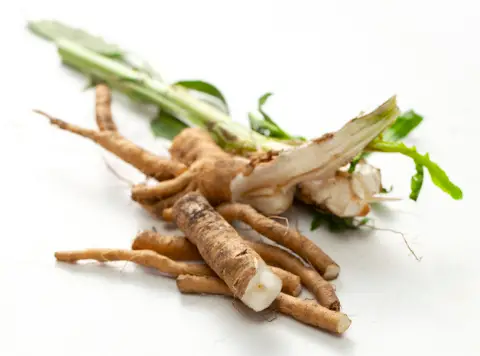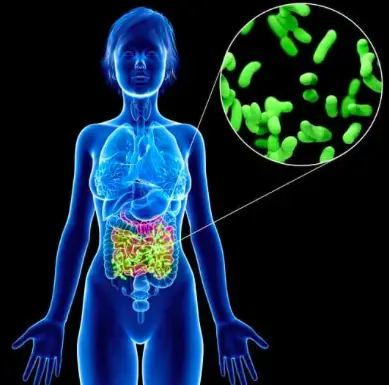Prebiotics are non-digestible fibers or carbohydrates that serve as food for the beneficial bacteria in our gut microbiota. They are typically found in plant-based foods like fruits, vegetables, and whole grains. Prebiotics cannot be broken down by the human digestive system, so they pass through the stomach and small intestine undigested and reach the colon intact.
Once in the colon, prebiotics are fermented by the beneficial bacteria in our gut microbiota. This fermentation process produces short-chain fatty acids (SCFAs), which are the main source of energy for the cells lining the colon. SCFAs also play an important role in maintaining gut health by promoting the growth of beneficial bacteria and inhibiting the growth of harmful bacteria.
Prebiotics are beneficial to our health in many ways. They have been shown to improve digestive health, boost immunity, lower inflammation, and improve metabolic health. They also help to maintain a healthy balance of bacteria in the gut microbiota, which is important for overall health and wellbeing.
Examples of prebiotics include inulin, fructooligosaccharides (FOS), galactooligosaccharides (GOS), and resistant starch. These compounds are found in foods like bananas, onions, garlic, asparagus, oats, and legumes. To maximize the prebiotic content of your diet, it’s important to consume a variety of fiber-rich plant-based foods.
Inulin is a type of prebiotic dietary fiber that is found in a variety of plant-based foods. It is a complex carbohydrate that is made up of chains of fructose molecules, and it is resistant to digestion in the human small intestine. Inulin is fermented by the beneficial bacteria in our gut microbiota, producing short-chain fatty acids (SCFAs) that provide energy to the cells lining the colon and promote gut health.

Inulin is commonly extracted from plants like chicory root, Jerusalem artichoke, and agave. It is used as an ingredient in a variety of food products, including yogurts, bars, cereals, and baked goods, as well as dietary supplements. Inulin is often added to foods to increase their fiber content and improve their nutritional profile.
Research has shown that consuming inulin may have several health benefits, including improving digestive health, boosting immunity, and reducing the risk of chronic diseases like diabetes and cardiovascular disease. Additionally, inulin has been found to increase feelings of fullness and aid in weight management, making it a popular ingredient in weight loss products.
Fructooligosaccharides (FOS) and galactooligosaccharides (GOS) are both types of prebiotic dietary fibers that serve as food for the beneficial bacteria in our gut microbiota. However, there are some differences between the two.
FOS are made up of chains of fructose molecules, while GOS are made up of chains of galactose molecules. Both FOS and GOS are resistant to digestion in the small intestine, and they are fermented by the beneficial bacteria in the colon, producing short-chain fatty acids (SCFAs) that provide energy to the cells lining the colon and promote gut health.
FOS are commonly found in foods like chicory root, onions, garlic, and asparagus. They have a slightly sweet taste and are often used as a natural sweetener in food products. FOS have been shown to improve digestive health, boost immunity, and lower inflammation.
GOS are less commonly found in food, but they can be synthesized from lactose, which is found in milk. GOS are often added to infant formula to mimic the prebiotic effects of human milk. GOS have been shown to improve gut health and reduce the risk of infections in infants.
Overall, FOS and GOS are similar in their prebiotic effects and health benefits, but they have different chemical structures and sources. Both can be beneficial to consume as part of a healthy diet.

Prebiotic resistant starch is a type of dietary fiber that is resistant to digestion in the small intestine and serves as food for the beneficial bacteria in our gut microbiota. Resistant starch is a form of starch that is not broken down by digestive enzymes in the small intestine and instead reaches the colon intact, where it is fermented by the gut microbiota.
Resistant starch is found in foods like legumes, whole grains, green bananas, and potatoes that have been cooked and then cooled. When these foods are cooked and cooled, the starch molecules undergo a process called retrogradation, which increases their resistance to digestion.
Research has shown that consuming prebiotic resistant starch may have several health benefits, including improving digestive health, reducing inflammation, and lowering the risk of chronic diseases like type 2 diabetes and colorectal cancer. Prebiotic resistant starch has also been found to improve insulin sensitivity and aid in weight management by increasing feelings of fullness.
It’s important to note that not all types of starch are prebiotic resistant starch. For example, highly processed foods like white bread and white rice have very little resistant starch, while whole grain bread and brown rice have higher amounts. To increase your intake of prebiotic resistant starch, it’s recommended to consume a variety of whole foods that are rich in resistant starch.



